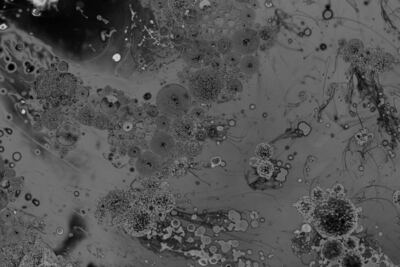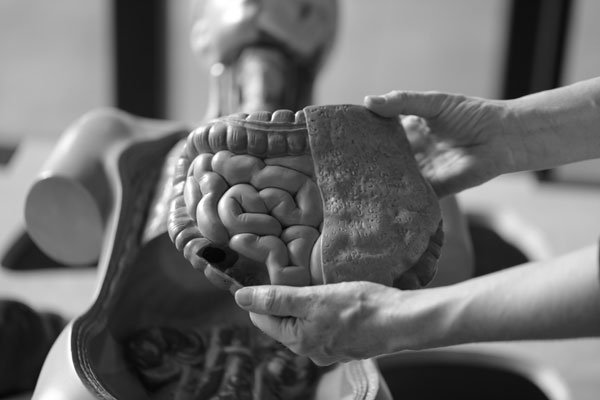Introduction
The human gastrointestinal microbiome comprises trillions of microorganisms (in the order of 1013 organisms), and it includes bacteria, archaea, fungi, and protozoa. The abundance of microorganisms increases towards the lower part of the digestive system, being particularly abundant in the large intestine. An extensive body of literature highlights two phyla as the dominant in the gut bacteria: Firmicutes and Bacteroidetes. Firmicutes are gram-positive bacteria and contain anaerobic Clostridia and strictly or facultative aerobic. Bacteroidetes, on the other hand, are Gram-negative and include genera such as Prevotella. Other microbial phyla that are present within the microbial community include Actinobacteria, Proteobacteria, and Fusobacteria.

The gut microbiota utilizes whatever is left of the food that their hosts have consumed and, in turn, produces essential nutrients, such as vitamins and amino acids. But the benefits of healthy microbial community do not end there. Indigestible fiber can be fermented by the microorganisms in the colon, producing short-chain fatty acids (SCFAs) that are the energy source for the cells lining the colon, enhancing the mucosal barrier.
Imbalances in the microbial community have been linked to various health conditions, including inflammatory bowel disease (IBD), irritable bowel disorder (IBS), skin diseases such as atopic dermatitis and psoriasis, and even neurological disorders like Parkinson’s and schizophrenia. Gut bacteria and their metabolic activity have the potential to modulate inflammation and intestinal permeability, therefore affecting overall health.
Macronutrients as a nutrient source for the gut microbiome
Macronutrients are the components of the food that the body requires in large quantities in order to function properly. These include carbohydrates, fats, and proteins. Macronutrients affect microbial abundance and diversity in different ways.
Carbohydrates are molecules that contain carbon, hydrogen, and oxygen with a hydrogen:oxygen ratio of 2:1. They are divided into two categories: digestible and indigestible. Digestible are those carbohydrates that can be broken down into smaller molecules and include sugars and certain types of starch. Indigestible, on the contrary, cannot be metabolized by the human body and includes fiber and resistant starch. Instead, they travel to the colon, where they are either fermented by microorganisms in the colon or, if resistant to fermentation, excreted as part of the feces. Carbohydrates are abundant in fruit and vegetables and are very predominant in plant-based diets. In these cases, Prevotella, which has been described as a biomarker of health, is a very abundant genus in this type of diet. Resistant starch, which is abundant in certain vegetables, is not digestible in the small intestine and is used by gut microbiota. This type of carbohydrate seems to stimulate the growth of Actinobacteria and Bacterioidetes, and decreases the abundance of Firmicutes.
Similar to carbohydrates, fats are composed of carbon, hydrogen, and oxygen, but in a different ratio. They can be divided into categories based on the presence of certain chemical compounds in their structure. For example, saturated fat does not contain any double bonds, whereas unsaturated fats do. High saturated and trans-fat diets are often linked to the risk of cardiovascular disease, whereas mono- and polyunsaturated fats are crucial for decreasing the likelihood of chronic disease. Additionally, mono and unsaturated-rich diets have been linked to reduced low density lipoprotein (LDL) cholesterol. Due to the insolubility of fats, our organisms have developed strategies to be able to digest them, such as the production of bile. Increased fat consumption without carbohydrates resulted in the proliferation of bile-tolerant gut bacteria. High far deeding increased the Firmicutes:Bacteroidetes ratio.
Proteins are polymeric molecules comprised of one or more chains of amino acids. Both meat and plants can contain a high concentration of proteins, but they are significantly different. Research has shown that high-protein diets usually result in higher diversity in the gut microbiome. However, the composition of the community is different depending on the origin. Plant-based proteins showed an increase in microorganisms that can produce short-chain fatty acids, whereas meat-based protein increased counts of bile-tolerant anaerobes.
Different diets, different gut microbiome
Humans require the intake of macronutrients in order to maintain their activity. However, these can derive from different sources, and their origins and proportions will define the diet. We have seen how the different macronutrients impact the gut microbiome diversity, but let us explore how different eating patterns also affect the distribution of organisms and their impact on health.
Western diets are characterized by high intakes of red meat, saturated fat, processed grains, and added sugars, and low intake of fiber. This diet is rich in saturated and trans fats, increasing the counts of anaerobic microorganisms. Results show that members of the genus Prevotella, linked to its utilization of carbohydrates are underrepresented in Western individuals. The low intake of fiber in Western diets has been directly linked with diseases such as cardiovascular disorder, colorectal and breast cancer, coronary heart disease, stroke, and type 2 diabetes.
Vegetarian and vegan diets, on the other hand, lack any kind of meat input, and it is rich in fresh fruit and vegetables, and the microbial composition reflects this fact. The gut bacteria is dominated by organisms able to degrade dietary fiber, and Prevotella. Fermentative organisms, capable of using non-digestible carbohydrates utilize sugars, generating SCFAs.
The Mediterranean diet sits in the balance between Western and plant-based diets. It is rich in food derived from plants, such as fruit, vegetables, legumes, and whole grains. One of the keys to this diet is the use of olive oil, which becomes the main source of fat. Moderate amounts of fish, poultry, and wine are consumed. Research into the effect of the Mediterranean diet on the gut microbiome studies revealed a higher abundance of Prevotella and other organisms known to degrade fiber. Analysis of urine revealed that humans following this diet show lower concentrations of trimethylamine-N-oxide (TMAO), a compound linked to a higher risk of atherosclerosis and cardiovascular disease. This compound derives from trimethylamine, a product of the metabolization of certain amino acids present in red meat, and particularly abundant in Western diets. Additionally, TMAO has often been linked to other conditions, like dementia and hypertension. Both the Mediterranean diet and plant-based diets are often regarded as healthiest, with reduced risks of chronic disease.
Ketogenic diets are quite popular for weight loss and are characterized by their high fat intakes, moderate protein intake, and very low carbohydrate intake, which drives the body into ketosis. Whereas the body’s first choice is metabolizing carbohydrates for energy, ketosis burns fatty acids in the mitochondria, breaking it down into a molecule called acetyl-CoA. This diet is rich in meats, poultry, fish, shellfish, eggs, cheese, green leafy vegetables, oils, and fats. Studies showed a decreased abundance of Firmicutes and an increased abundance of Bacterioidetes.

Engineering the gut for a better future
The delicate balance between diet and gut microbiome reflects the profound impact that our food choices can have on our overall health. Key players, such as Firmicutes and Bacterioides, alongside other phyla, shape the microbial community that accompanies us through our lives. Different macronutrients and dietary patterns affect the composition of the gut microbiota, which can help mitigate or exacerbate health conditions.
As research continues to disentangle the complex relationship between us and our microbiome, exciting future possibilities emerge. Gut microbiome engineering helps to shape the composition of the community by using prebiotics, probiotics, and dietary interventions, and affect our health. Fecal transplants, involving the transfer of stool from healthy donors to patients, also show promising results in the treatment of conditions such as Clostridium difficile infections. So, as we can see, the knowledge and capabilities to shape the microbial population co-habiting our bodies can help us build new strategies to deal with health and disease, paving the way for a healthier future.







